Day 5 Bali, Thursday, December 22. So far: Kecak Fire Dance. Totem Escape Room. Bali Treetop. Waterbom. Today is the Green Bike Tour. It’s hard to say what the best activity was in Bali, but my vote is for the Green Bike Tour. Our friends in Japan that have 4 kids recommended this outing to us. It was an all day event. The Green Bike Tour company sent a van to pick us up at 7:30 am. Breakfast was included in the tour, but I was afraid it might not be much for our hungry crew so I got up early and made peanut butter toast and jelly toast and glasses of water for everyone. Just a step above prison food.
The drive up north was about 1.5 hours. Around 9 am we stopped at a meeting point near a terraced rice field to pick up our tour guide, a young man named Gita. This was a vista point for viewing Mt. Batur and further off, Mt. Agung. Both mountains are active volcanos. The entire area where we stopped is actually a large caldera from a previous prehistoric, catastrophic, volcanic eruption. Wikipedia says this:
“Batur remains active to this day and has erupted over 20 times in the last two centuries. Major eruptions have occurred in 1917, 1926 and 1963 (the same year as Agung’s major eruption), making Batur Bali’s most active volcano.”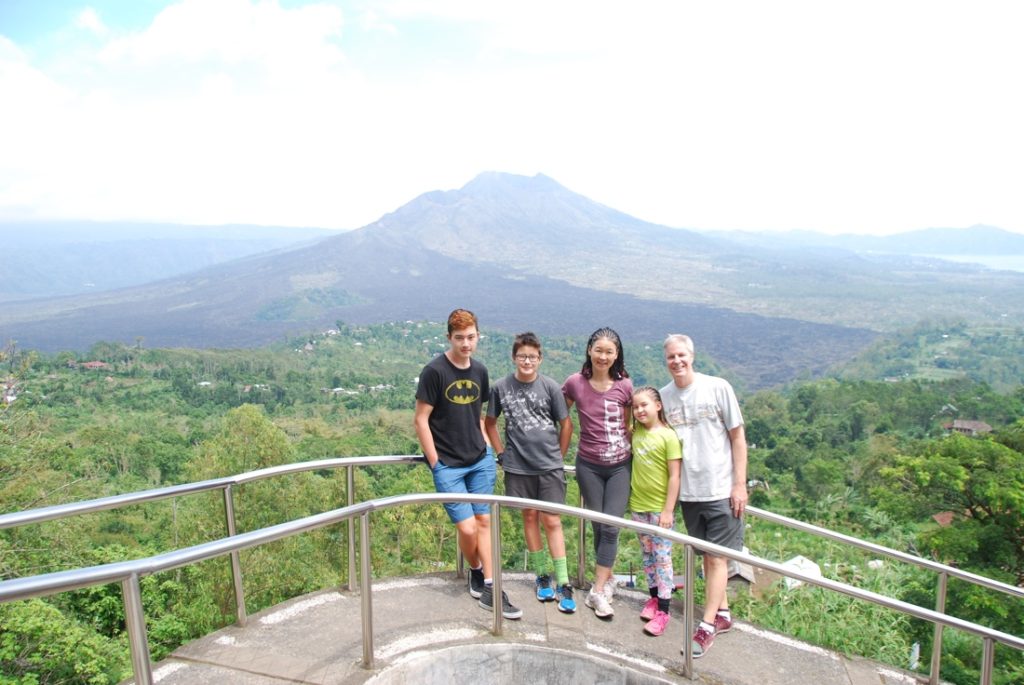
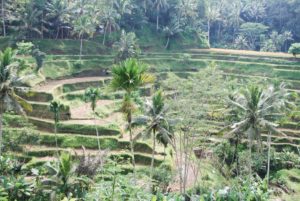
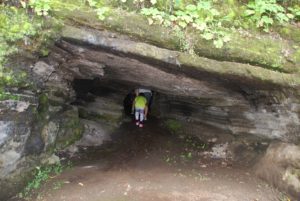 Our guide says that the terraces above usually look a lot greener but because of harvesting it’s all new rice now and thus the terraces are brown. It still looked beautiful to us. The other photo is a bunker from WWII. It actually has a passageway that you can walk all the way through. We all started to walk in but it’s very low and up ahead were a lot of bats flying around. They probably would have gotten stuck in our hair! So we turned around and came out the way we went in.
Our guide says that the terraces above usually look a lot greener but because of harvesting it’s all new rice now and thus the terraces are brown. It still looked beautiful to us. The other photo is a bunker from WWII. It actually has a passageway that you can walk all the way through. We all started to walk in but it’s very low and up ahead were a lot of bats flying around. They probably would have gotten stuck in our hair! So we turned around and came out the way we went in. 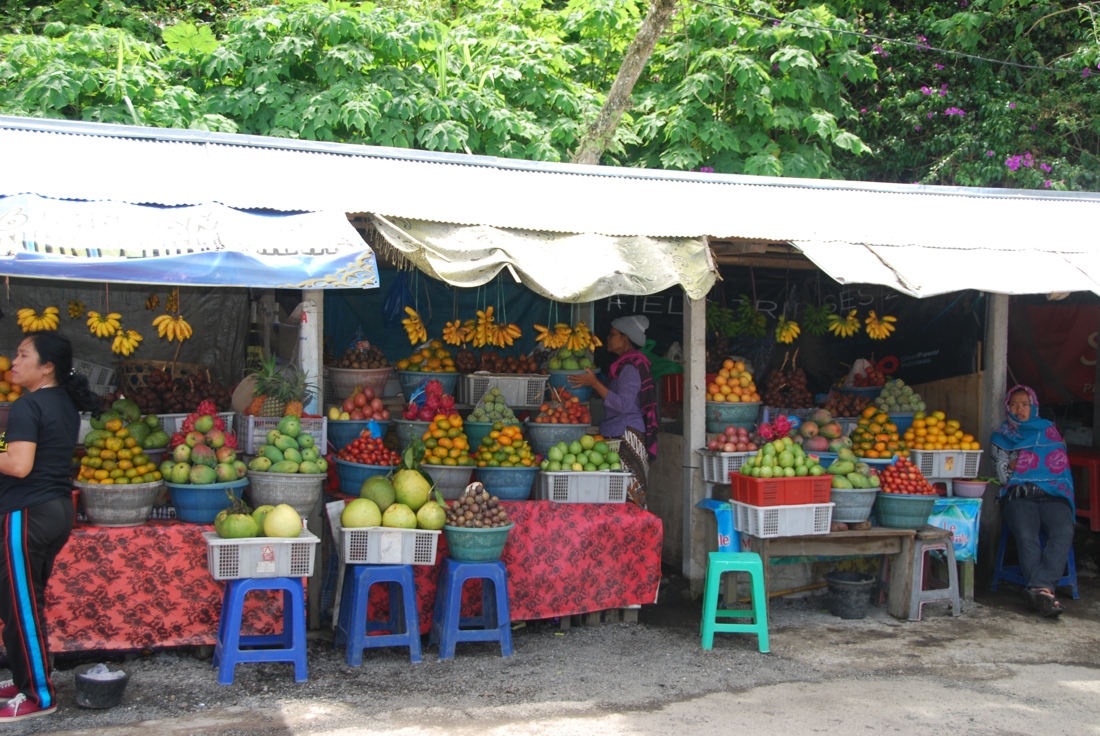 Oh the awesome Bali fruit! I wish I could bring this whole display back to Japan with me. I sure do miss these colorful tropical treats.
Oh the awesome Bali fruit! I wish I could bring this whole display back to Japan with me. I sure do miss these colorful tropical treats.
We went to breakfast at an “Agrotourism” center called BAS – a Bali Coffee Plantation. BAS is a beautiful place among lush greenery and various native plants. Here are photos of the largest spider that I’ve ever seen close up. Gita said it was friendly so John and Kaiyo tried it on! 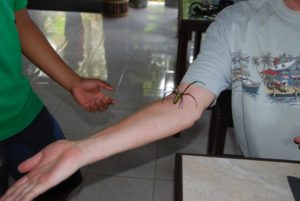
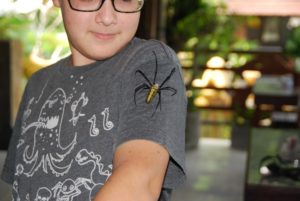
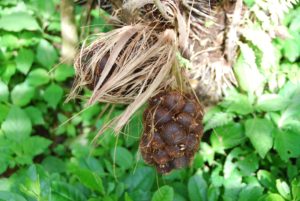 Gita took us around and we saw arabica coffee plants, snake fruit (at left, vicious spikes on this plant!), pineapple, cinnamon, ginseng, cocoa and more. We were served pancakes with native Indonesian bananas baked in. Our meal also came with a sampler of 14 different coffees, teas and cocoa.
Gita took us around and we saw arabica coffee plants, snake fruit (at left, vicious spikes on this plant!), pineapple, cinnamon, ginseng, cocoa and more. We were served pancakes with native Indonesian bananas baked in. Our meal also came with a sampler of 14 different coffees, teas and cocoa. 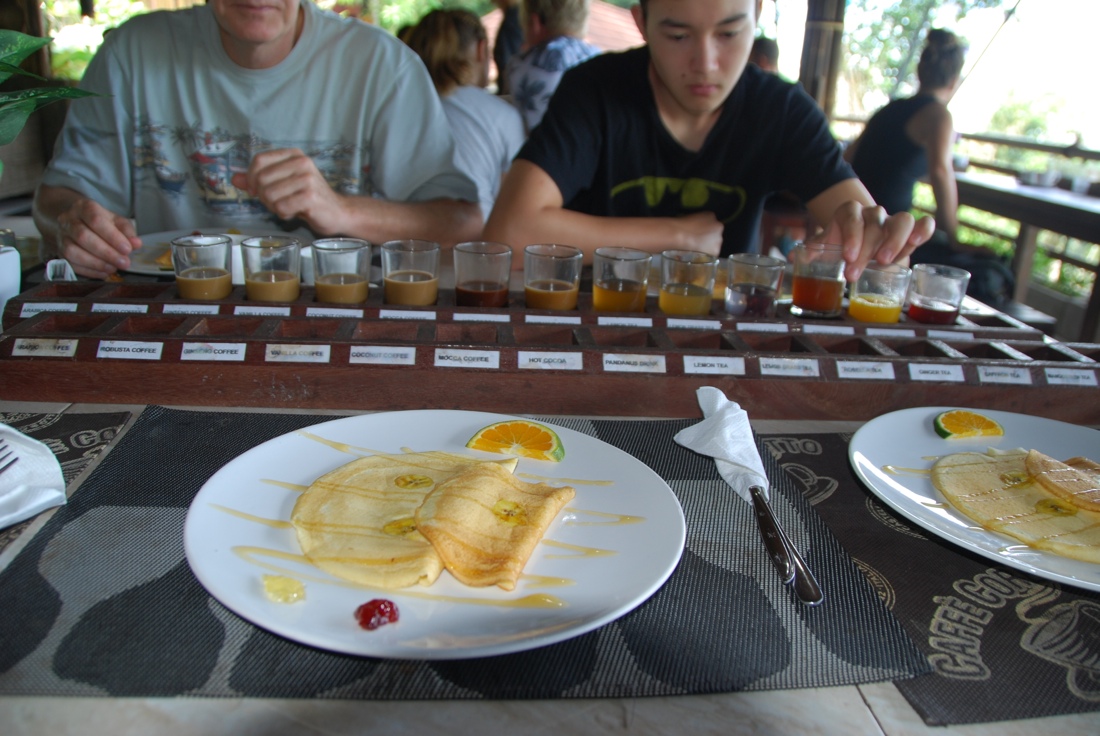 The samples included arabica coffee, coconut coffee, vanilla coffee, mocha coffee, ginseng coffee, hot cocoa, pandanus drink, lemon tea, ginger tea, lemongrass tea, and mangosteen tea. John decided to try the famous, or infamous, luwak coffee, also known as civet coffee and also known as cat poop coffee. Gita called it “cat-pooccino!” We had never heard of this coffee before coming to Bali but from now on I’ll hear it a lot now that it’s on my brain.
The samples included arabica coffee, coconut coffee, vanilla coffee, mocha coffee, ginseng coffee, hot cocoa, pandanus drink, lemon tea, ginger tea, lemongrass tea, and mangosteen tea. John decided to try the famous, or infamous, luwak coffee, also known as civet coffee and also known as cat poop coffee. Gita called it “cat-pooccino!” We had never heard of this coffee before coming to Bali but from now on I’ll hear it a lot now that it’s on my brain.
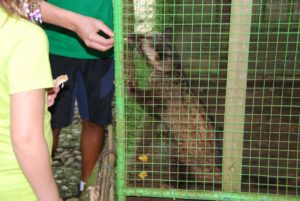 A luwak (Indonesian name), also known as a palm civet cat, eats coffee berries, digests them and poops them out whole. These pooped out coffee berries are then collected and processed, hulled and roasted. This whole process is said to create the most exquisite and expensive coffee in the world. The kids got to feed the luwaks pieces of oranges. Gita said these animals are brought here for a little while so that the public can see them and appreciate them and then they are sent back into the wild.
A luwak (Indonesian name), also known as a palm civet cat, eats coffee berries, digests them and poops them out whole. These pooped out coffee berries are then collected and processed, hulled and roasted. This whole process is said to create the most exquisite and expensive coffee in the world. The kids got to feed the luwaks pieces of oranges. Gita said these animals are brought here for a little while so that the public can see them and appreciate them and then they are sent back into the wild.
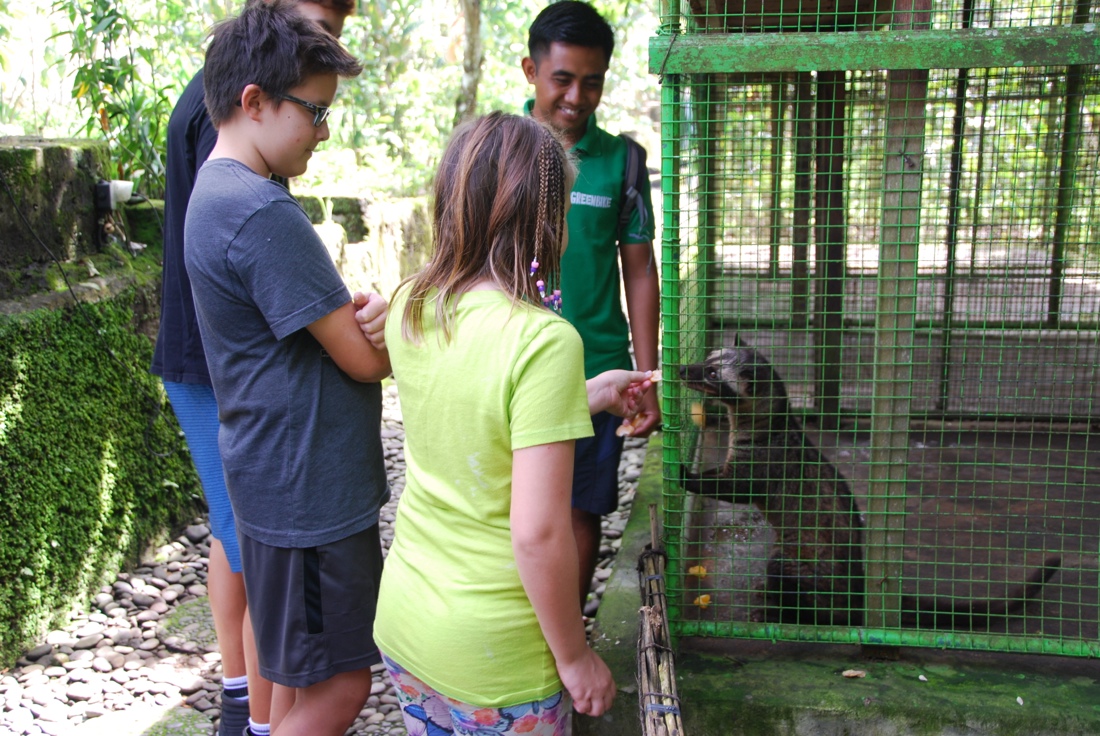 This is some very interesting information from the website http://www.most-expensive.coffee:
This is some very interesting information from the website http://www.most-expensive.coffee:
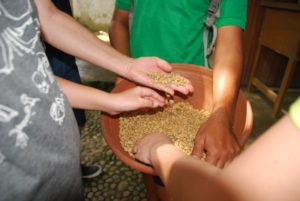 “Wild kopi luwak is collected from local farmers in Indonesia. They separate the coffee beans from the feces, wash them and then dry them in the sun. Once the beans are dry enough to remove the outer skin easily, they are put into a wooden mortar and pounded with a pestle. The beans are not affected by the pounding, but the skin will break apart, making it possible to easily remove the coffee beans. Then they are hand-sorted to remove any damaged beans. Now the remaining kopi luwak beans are ready for roasting.”
“Wild kopi luwak is collected from local farmers in Indonesia. They separate the coffee beans from the feces, wash them and then dry them in the sun. Once the beans are dry enough to remove the outer skin easily, they are put into a wooden mortar and pounded with a pestle. The beans are not affected by the pounding, but the skin will break apart, making it possible to easily remove the coffee beans. Then they are hand-sorted to remove any damaged beans. Now the remaining kopi luwak beans are ready for roasting.”“In the 19th century – when Indonesia was a Dutch colony– it was illegal to sell coffee beans to the local Indonesian population because all the coffee beans were exported to Europe. Therefore, the locals collected the feces of wild palm civet cats because the coffee seeds inside of the droppings were left undigested. Soon, the special flavor of this civet coffee, better known as kopi luwak coffee, became known to the Dutch farmers, who started drinking it themselves.”
John paid the extra 60,000 IDR (at our exchange rate that’s about $4.50) to try a cup of luwak coffee. Here is a syphon coffee maker being used to brew his cat- poo-cchino. John said it was strong but very good. After he added some sugar I tried it too. I’m not a coffee specialist but it was pretty good. We bought some as a gift for Avalon’s teacher because she is a coffee specialist. Or at least a coffee lover. After breakfast we were finally off to get our bikes.
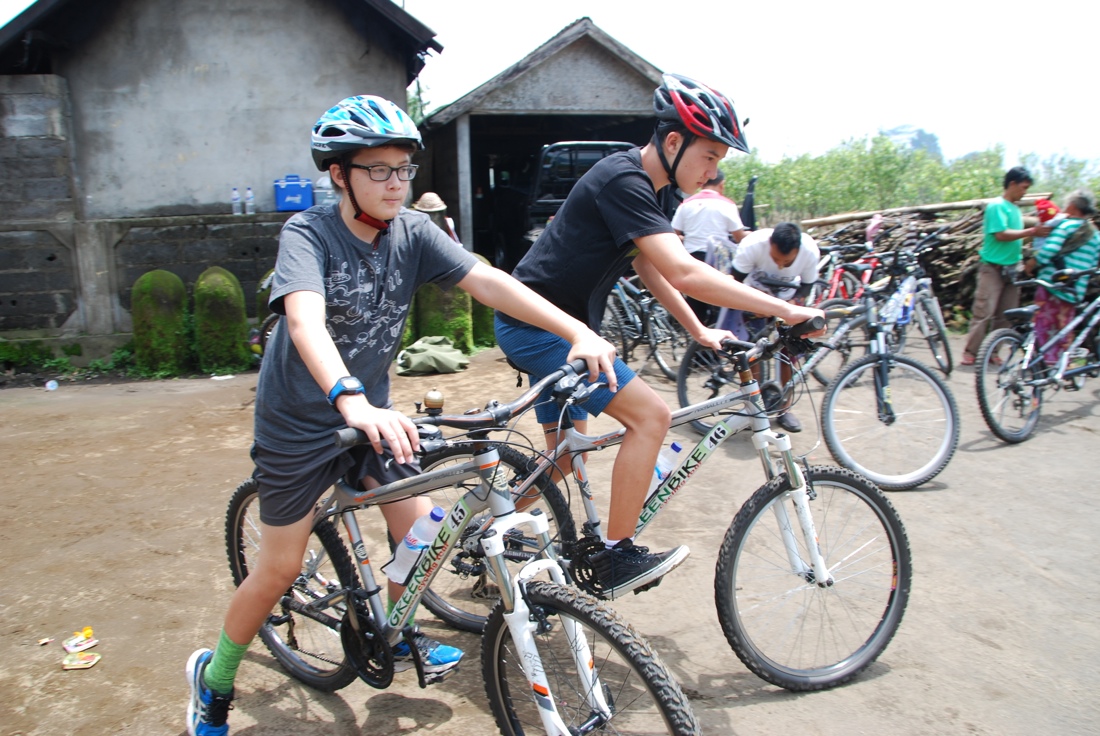
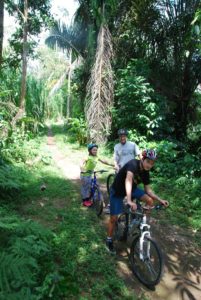 This bike tour led us on a 25 km journey through the interior of Bali. In fact, we stopped to eat a snack of crackers and bananas at a temple in the exact center of Bali, at least that’s what Gita said. John, Halyard and Avalon went off the beaten path to do some real off-road biking. Kaiyo elected to stay on the main road so I stayed with him, but frankly, a lot of this bike trip was off-road, bumpy, muddy and unstable. Avalon bit the dust on the extra off-roading she did, but she was a real trooper and didn’t let it bother her. I told John it was a good thing I’ve already had my initiation riding through unstable roads in the rice fields while exploring with him in Japan. I really hated that at first but it definitely prepared me for this Bali bike ride.
This bike tour led us on a 25 km journey through the interior of Bali. In fact, we stopped to eat a snack of crackers and bananas at a temple in the exact center of Bali, at least that’s what Gita said. John, Halyard and Avalon went off the beaten path to do some real off-road biking. Kaiyo elected to stay on the main road so I stayed with him, but frankly, a lot of this bike trip was off-road, bumpy, muddy and unstable. Avalon bit the dust on the extra off-roading she did, but she was a real trooper and didn’t let it bother her. I told John it was a good thing I’ve already had my initiation riding through unstable roads in the rice fields while exploring with him in Japan. I really hated that at first but it definitely prepared me for this Bali bike ride.
We probably biked for a few hours. Along the way we stopped at the house of a native Balinese family. They gave us a tour of their “housing compound.” I call it a compound because a Bali home is comprised of several buildings and every Hindu home has a temple built alongside the daily living buildings. While we walked around the native family’s home, Gita explained some interesting stories about Balinese families and how they live. He also showed us how to make the daily offering that we see everywhere in Bali. Some families make dozens each day and some only make a few. It depends on how many buildings a complex has. Every store, restaurant, resort, market, villa, street corner, literally anywhere will have an offering outside of it.
This was Avalon’s favorite part of Bali she said. After Gita taught her how to make the offerings she was obsessed with finding the materials and doing it on her own. Gita said we needed to find a traditional market to buy the supplies. Below is an offering that Avalon made later on with the generous help of some Balinese women. More on that later.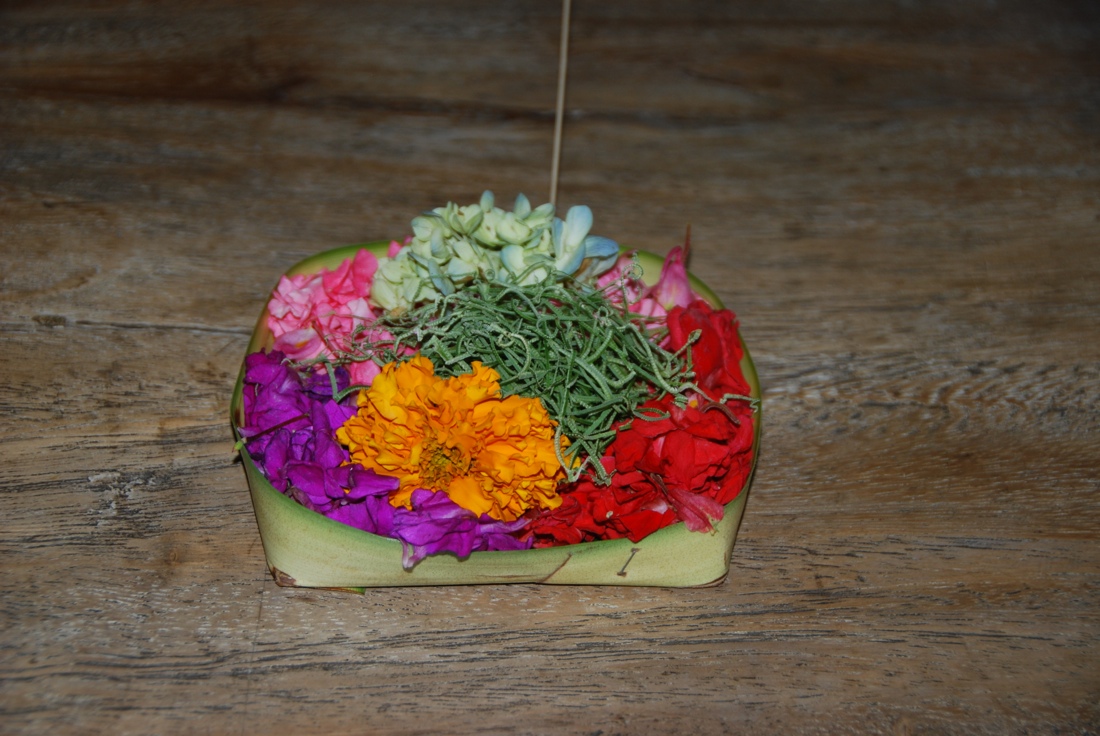
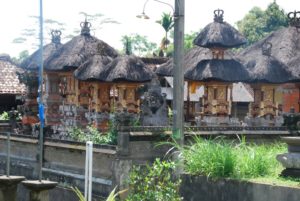
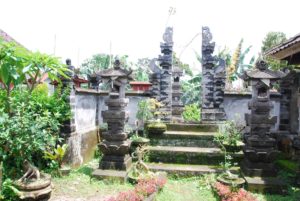
At left is an example of a wealthy Balinese home. This temple is very ornate and painted gold. They have crown ornaments atop their structures. The temples are hand painted. We saw some men painting by hand as we drove by one day. So the fancier the home’s temple is, the wealthier the family. At right is a simple temple. Below are two photos of schools that we passed. One is a primary school and one is a secondary school.
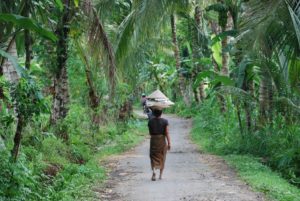
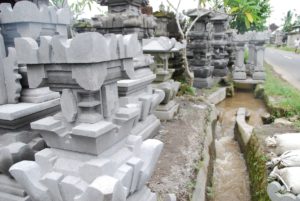 We also biked to a stone mason business and saw the workers carving out the stone decor (now mostly cement actually because stone is becoming scarce) for Balinese houses and temples. A lot of it is done BY HAND! We also saw a house painting business, and again, the detailed painting on the columns and outside the houses is done by hand and it is so intricate I feel that they must use a tiny brush or something. Truly amazing! We ended our bike tour with lunch at a beautiful resort. Gita took our lunch orders in advance and he must have phoned them in because we didn’t wait long once we got to the restaurant. I don’t know what this place is called, but it was really nice and cool and the food was delicious.
We also biked to a stone mason business and saw the workers carving out the stone decor (now mostly cement actually because stone is becoming scarce) for Balinese houses and temples. A lot of it is done BY HAND! We also saw a house painting business, and again, the detailed painting on the columns and outside the houses is done by hand and it is so intricate I feel that they must use a tiny brush or something. Truly amazing! We ended our bike tour with lunch at a beautiful resort. Gita took our lunch orders in advance and he must have phoned them in because we didn’t wait long once we got to the restaurant. I don’t know what this place is called, but it was really nice and cool and the food was delicious. 
Don’t they look so tired? Both of them look ready to pass out in their seats. Kaiyo is drinking a banana milkshake and Avalon is drinking fresh watermelon juice. Below, Halyard is occupying himself with his phone and massaging the wheatgrass, or cat grass, or whatever it is.
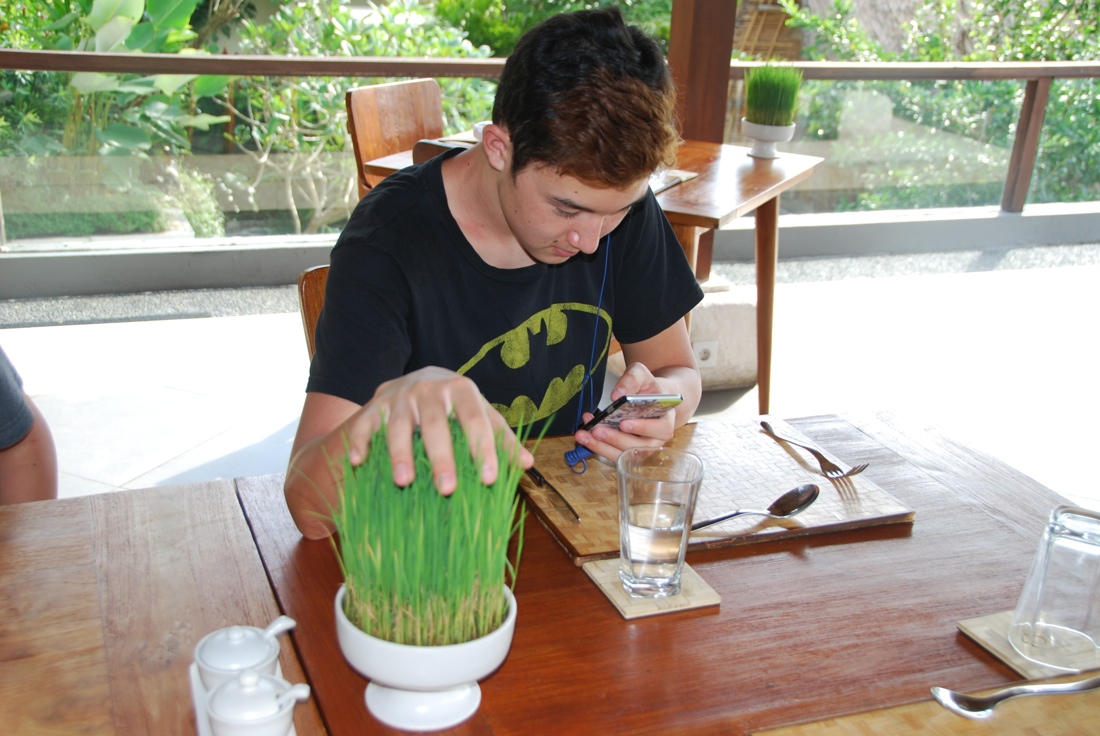 We highly recommend the Green Bike Tour. It was definitely one of the best days we had in Bali. Gita our guide knew so much about the local scene and history of the people. He told us that previously he had a job taking tourists mountain climbing to the top of Mt. Batur and Mt. Agung. But you have to start hiking really early for Batur and at midnight for Agung to get to the summit by sunrise. He said biking downhill is a much easier job!
We highly recommend the Green Bike Tour. It was definitely one of the best days we had in Bali. Gita our guide knew so much about the local scene and history of the people. He told us that previously he had a job taking tourists mountain climbing to the top of Mt. Batur and Mt. Agung. But you have to start hiking really early for Batur and at midnight for Agung to get to the summit by sunrise. He said biking downhill is a much easier job!
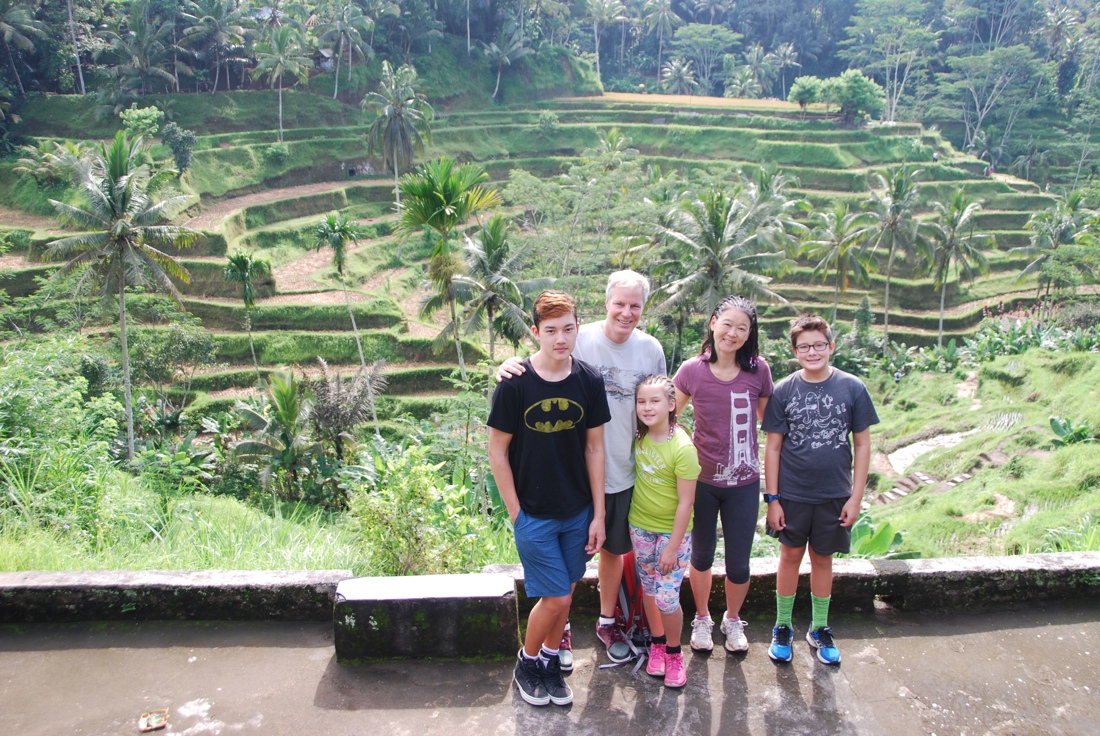 When we got back to our villa the kids wanted to sit around and stare at their electronics. So John and I walked to downtown Seminyak for a date night dinner. We thought we should eat at a place that we would not take the kids to… the winner was a vegan/vegetarian restaurant called Earth Cafe. They had raw and cooked vegan dishes and it was basically Balinese in vegan form. Not too bad but not amazingly delicious either. We ended up getting take out burgers for the kids from Cafe Moonlight on our way home.
When we got back to our villa the kids wanted to sit around and stare at their electronics. So John and I walked to downtown Seminyak for a date night dinner. We thought we should eat at a place that we would not take the kids to… the winner was a vegan/vegetarian restaurant called Earth Cafe. They had raw and cooked vegan dishes and it was basically Balinese in vegan form. Not too bad but not amazingly delicious either. We ended up getting take out burgers for the kids from Cafe Moonlight on our way home.
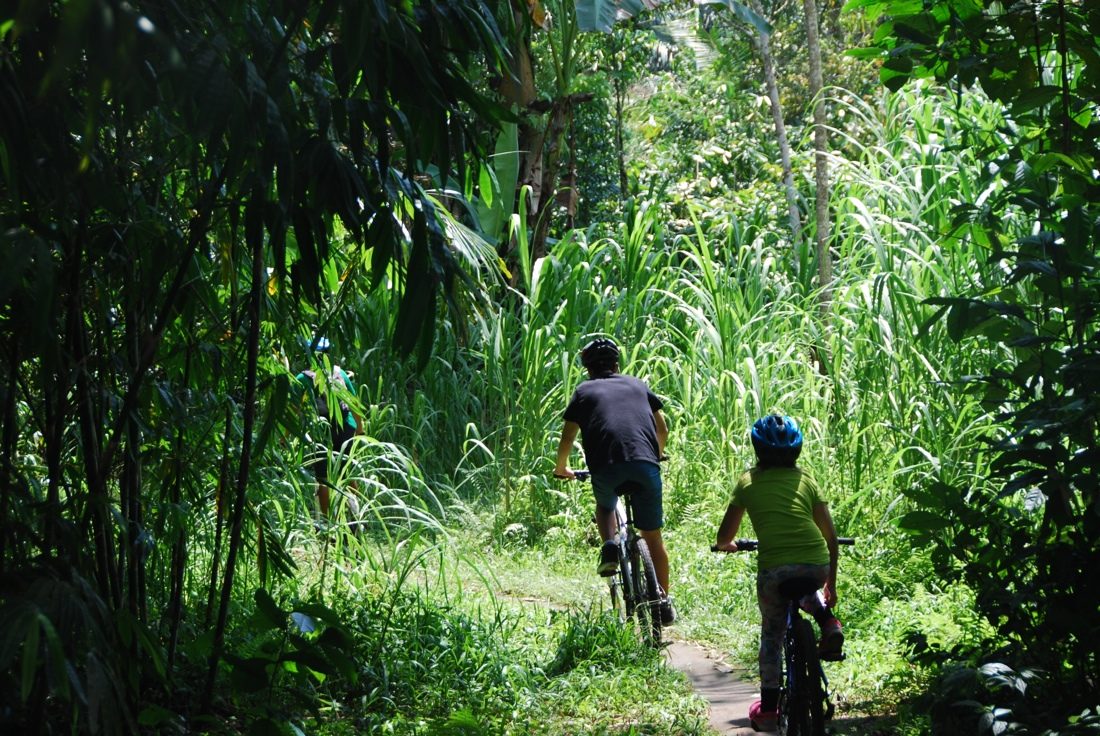
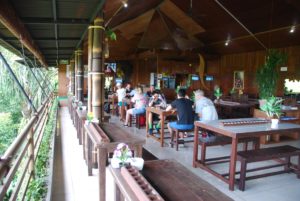
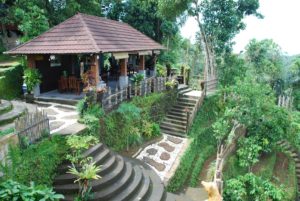
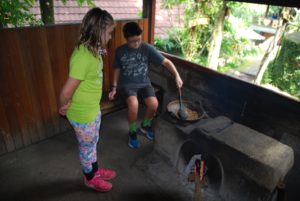
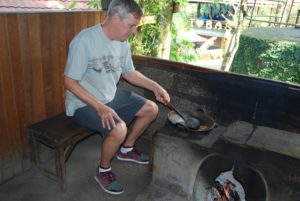
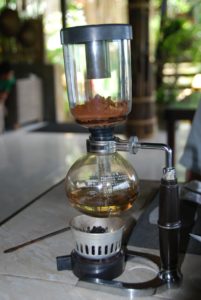
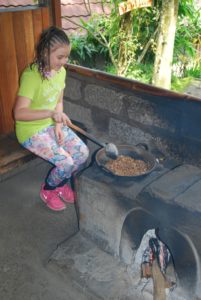
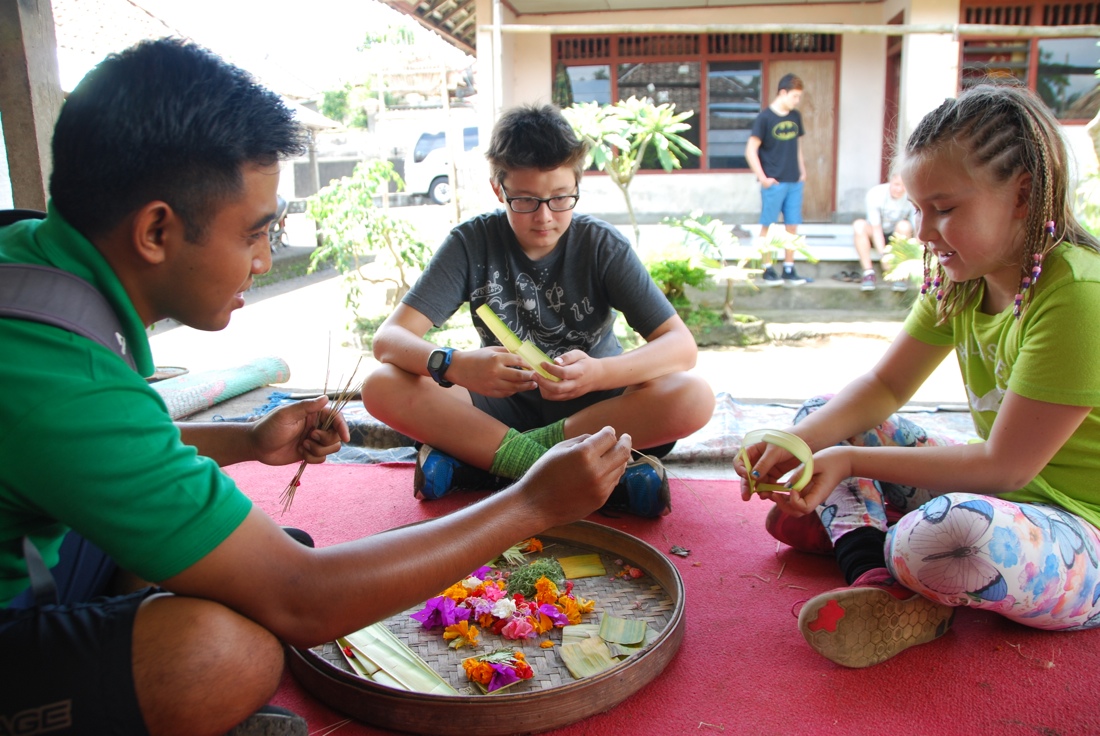
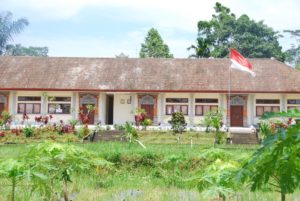
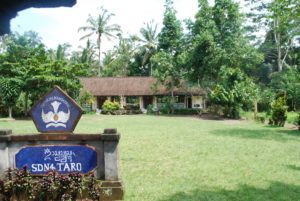
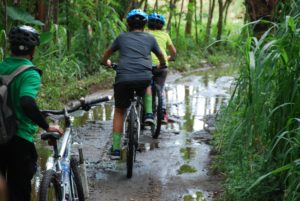
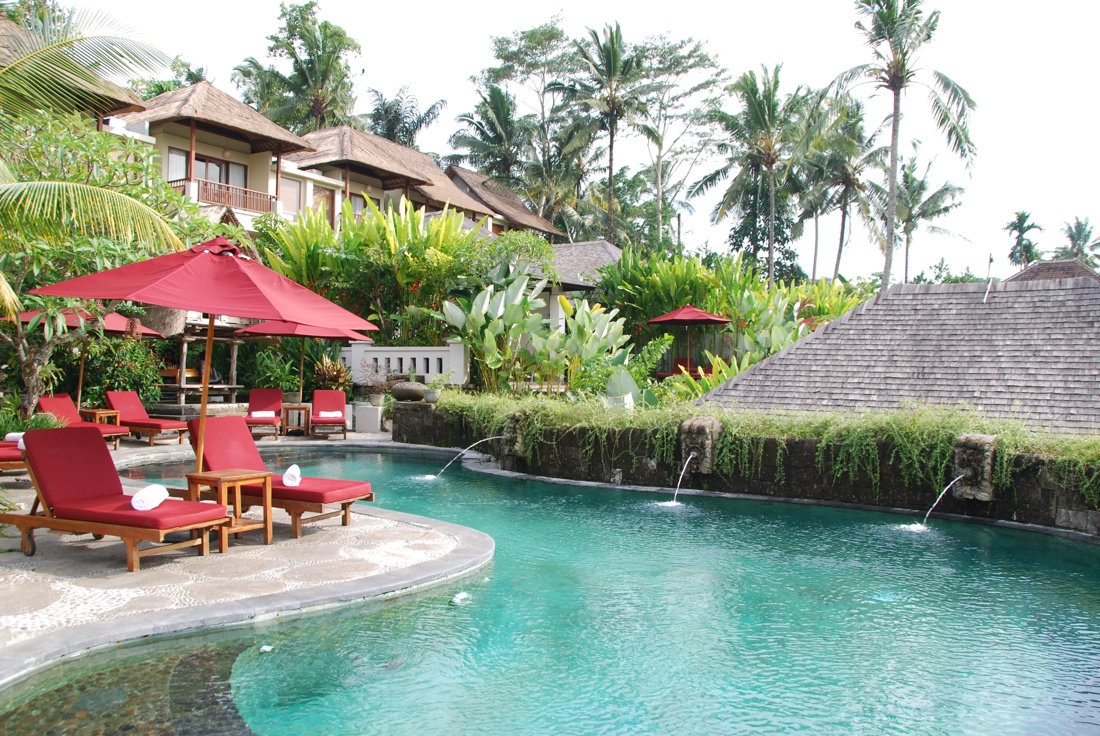
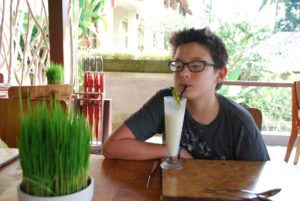
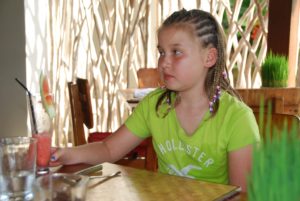
Comments (2)